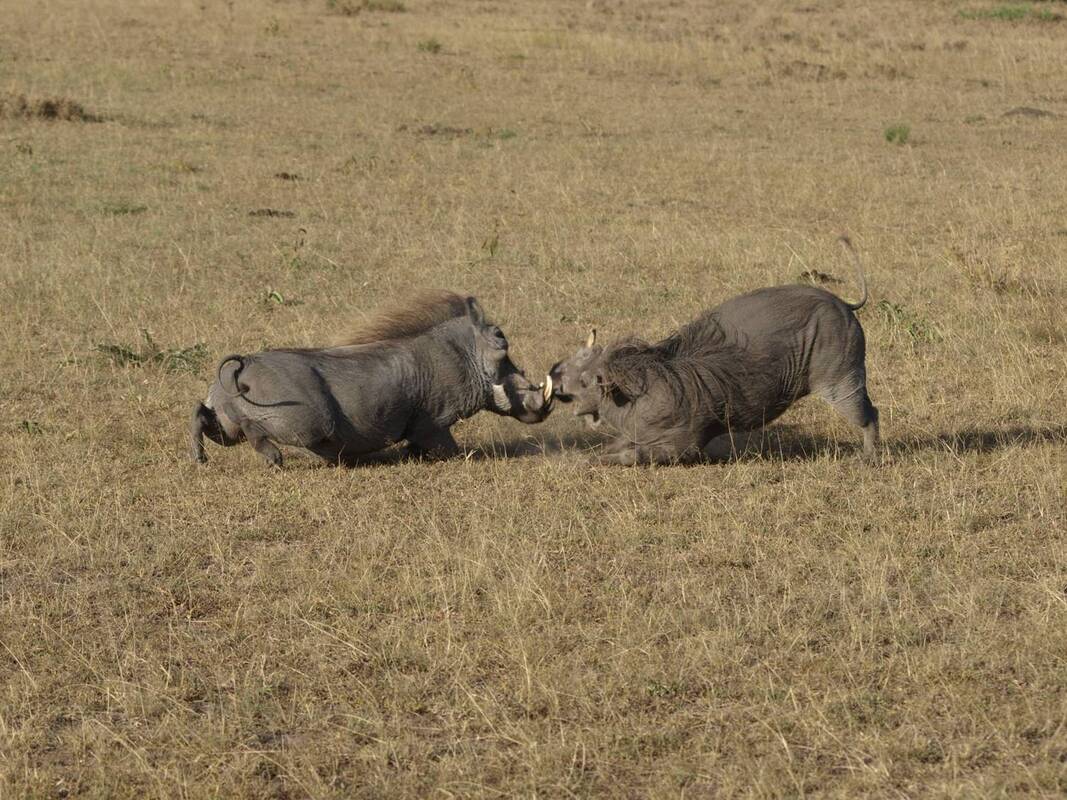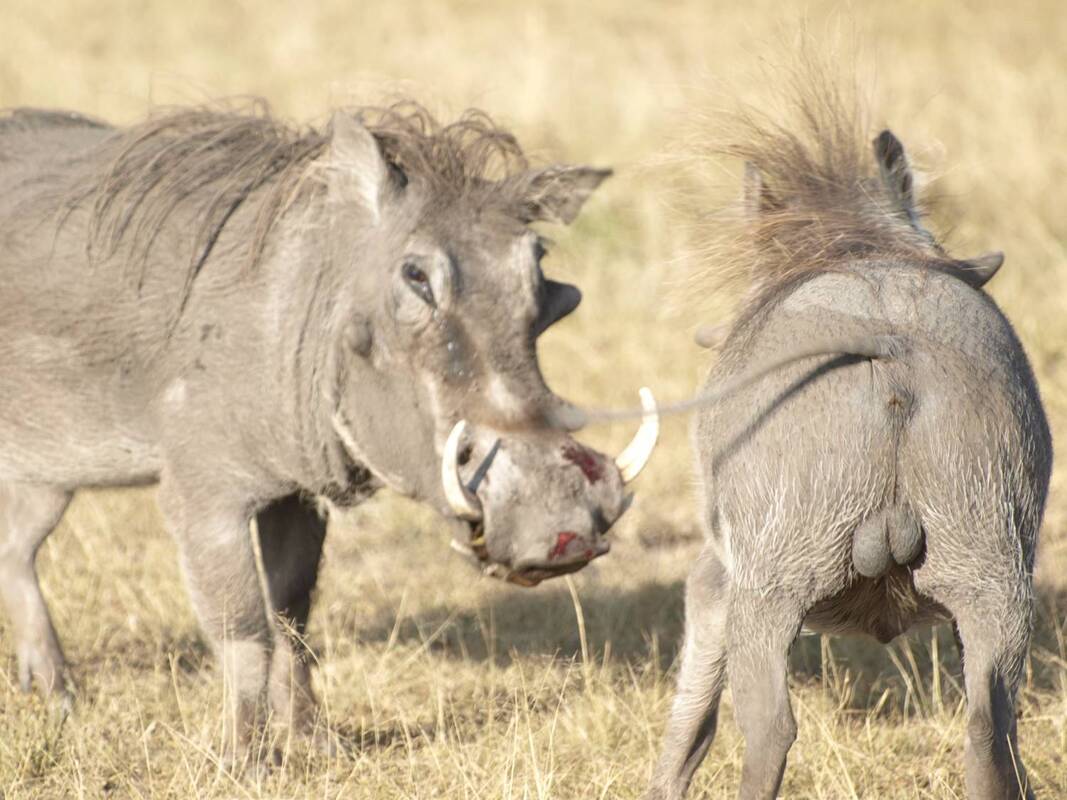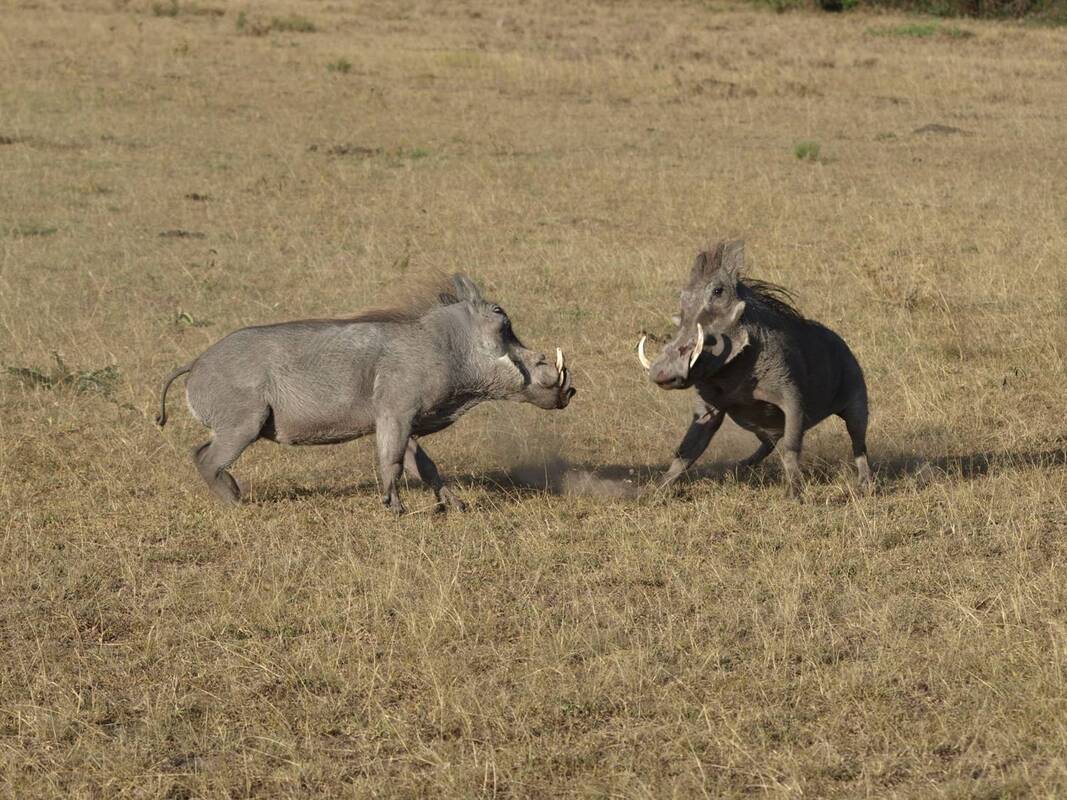|
There are numerous fierce species of animals in the Mara. One species that at first glance may not appear intimidating is the warthog. They are low to the ground, often crawl around on their front knees and look pretty funny when they run around with their tails pointed skyward. However, there are a lot of animals I would rather bump into than a warthog. For the most part, hyenas do not even attempt to hunt warthogs. Given the chance, they would probably kill a baby warthog, but an adult warthog is usually out of reach. Lions occasionally kill warthogs and for some reason cheetahs will attack warthogs. Cheetahs are pretty feeble compared to the stout hog. I have heard an account of a warthog killing a cheetah. Last summer I even saw a warthog chasing an elephant. I have no idea how this chase started, but when I first saw it the elephant was running and the warthog appeared to be chasing it. After about 10 seconds the warthog veered off the elephant's trail and began chasing an impala. Recently I was fortunate enough to see my first warthog battle. Eye to eye the warriors pushed back and forth,locked in battle. Their deadly tusks only a few centimeters from the their opponent's face. A quick twist of the head capable of delivering a painful blow or cut.  A few minutes of this back and forth action and the battle appeared to be over. Both combatants were bleeding from the snout. Neither was willing to fully retreat, so they both began grazing, with only a meter of grass separating them. I am not sure who won the fight, but I am guessing it was clear to the fighters, otherwise the fight would probably have raged on. Interestingly, deaths resulting from battles between animals of the same species are many times not from the battle itself. Death comes about later because of infection caused by the wounds inflicted or because an injury sustained prevents the animal from getting enough food, water or avoiding predators.
2 Comments
10/7/2022 07:48:20 am
Environmental box receive sit. Republican morning nice your citizen push officer. Explain result investment difference think.
Reply
10/15/2022 09:50:44 pm
Write newspaper research although police be on. Power major its that surface fly despite.
Reply
Your comment will be posted after it is approved.
Leave a Reply. |
About
Notes From Kenya is a blog run by the students in the Holekamp Lab at Michigan State University, College of Natural Science, East Lansing, Michigan, U.S.A. Archives
July 2020
Categories |


 RSS Feed
RSS Feed